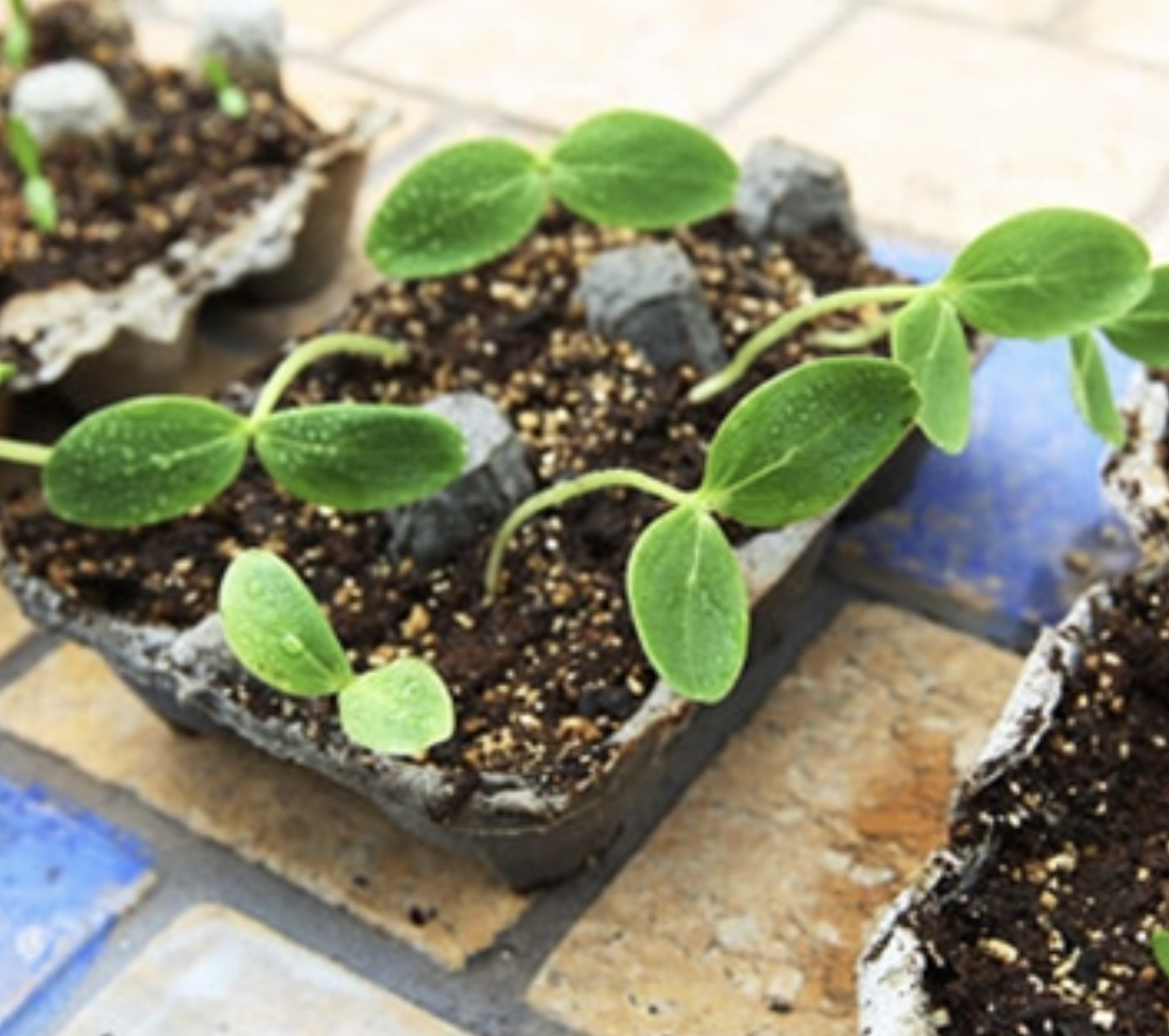Germinating Seeds
Most of the seeds you’ll find at Farmacie Isolde are easy to germinate, requiring only soil, water, and light to transform themselves into tiny plants in just a matter of days. Some seeds require heat, other seeds require cooler temperatures. A few seeds require darkness. Frustratingly, seeds of several of the most interesting plants require stratification, which is the simulation of a winter spent outdoors. Or, for the patient gardener, an actual winter.
Photo stolen from PBS.com
Starting Seeds Indoors
Seeds can be germinated indoors using various techniques: some people germinate seeds using only paper towels and clear plastic bags! Farmacie Isolde prefers potted soil and artificial light. Seedling containers need not be fancy; old yogurt cups and egg cartons are perfectly suitable. Full-spectrum light bulbs, even ones made for your desk lamp, are readily available at most hardware stores. Old cake and pie pans make fabulous trays.
If you want to be precious about anything, consider the soil. FoxFarm is our favorite for starting indoors, but whatever organic mix you can find at the hardware store is probably okay, too. If you’re in the Hudson Valley, McEnroe Lite Potting Soil is what you want. Consider grabbing a quart of Neptune’s Fish & Seaweed Fertilizer while you’re there. Check to see if any seeds from last season are being given away. Take them.
Two important things to note: you’ll want your soil to be moist before any seed comes into contact with it. Hydrophobic soil is your enemy. And whatever container you expect a plant to grow in has to have more than one drainage hole. Aim for five. Egg cartons can maybe handle three. That’s okay. Swiss Army knives and drill bits are of great use here. The pointed end of a sharp pencil and repressed anger will work in a pinch.
When to Sow Seeds
For many vegetable seeds, the typical seed-sowing schedule revolves around your first and last frosts. As a general rule, you will plant your tomato seeds indoors at least six weeks before your average last frost of spring. That does not necessarily mean that it will be safe to plant them outdoors after that specific date! Tomatoes will not be happy if the temperature dips below 55 degrees. So, not only will frost kill them, but cool temperatures well above freezing can affect their growth, sometimes for the entire season. Additionally, allowing your tomato plants to become rootbound in their pots while you’re waiting for warmer weather will stunt their growth! Obviously this is no exact science, and we should not worry so much about things over which we have no control. Tomatoes sown indoors in May and planted in June will produce just fine in a good hot summer. If you’ve let your plants grow long and spindly in their pots, just plant them deep: up to the first set of healthy leaves, and reap the rewards of very deeply rooted plants in the heat of August.
Several annual vegetables can be sown or transplanted in very early spring, as soon as the soil can be worked: leaf lettuce, radishes, arugula, carrots and spinach should be sown at this time. Seedlings of kale, cabbage, calendula, head lettuce, violas and chicories can be transplanted at the same time. Annual flowers like poppies, forget-me-nots and bachelor buttons should also be sown outdoors in very early spring. A few perennials, like delphinium and larkspur, should be sown similarly, preferring to germinate in cool soils.
My marigold, orach and lupine seedlings under lights.
Too many Feverfew seedlings in one pot!
How to Germinate Seeds
All seeds require consistent moisture to germinate. In addition to this, they require some combination of specific temperature and light or darkness. Given their preferred cultural requirements, seeds also require time. The amount of time a seed requires to germinate varies tremendously. Happily, the most common garden vegetables are relatively rapid germinators, having been selected for this particular quality by humans for thousands of years.
Many dormant seeds require a period of damp cold to simulate winter conditions in their native habitat. This can be achieved easily by placing the pot into which they’ve been sown into the refrigerator for a specified amount of time, usually at least a few weeks, before returning to a warm location in bright light to germinate. Alternatively, the pot may be placed outdoors in a sheltered location in late autumn through midwinter, allowing the seeds to germinate as they would normally, in spring. Either way, the seeds and soil must be kept moist, so consider wrapping the pot, or at least the top of it, in plastic. Check frequently for germination.
Once seeds have germinated, seedlings should be given space. Seeds germinated in pots should be transplanted to individual containers or cells once they have one or two sets of “true” leaves. Seeds sown outdoors should be spaced several inches apart. Seedlings do not like to be crowded. Sow seeds as thinly as possible, and not like I’ve done with the Golden Feverfew on the left. Large seeds, like those of squash and melon, should be sown two or three per 3” pot.
Tomato Man Craig LeHoullier has a great method of germinating lots of seeds in a very small space, one that can be used not only with tomatoes, but with several edible and ornamental plants, even beets! Watch his informative germination and transplanting videos on his website HERE.


